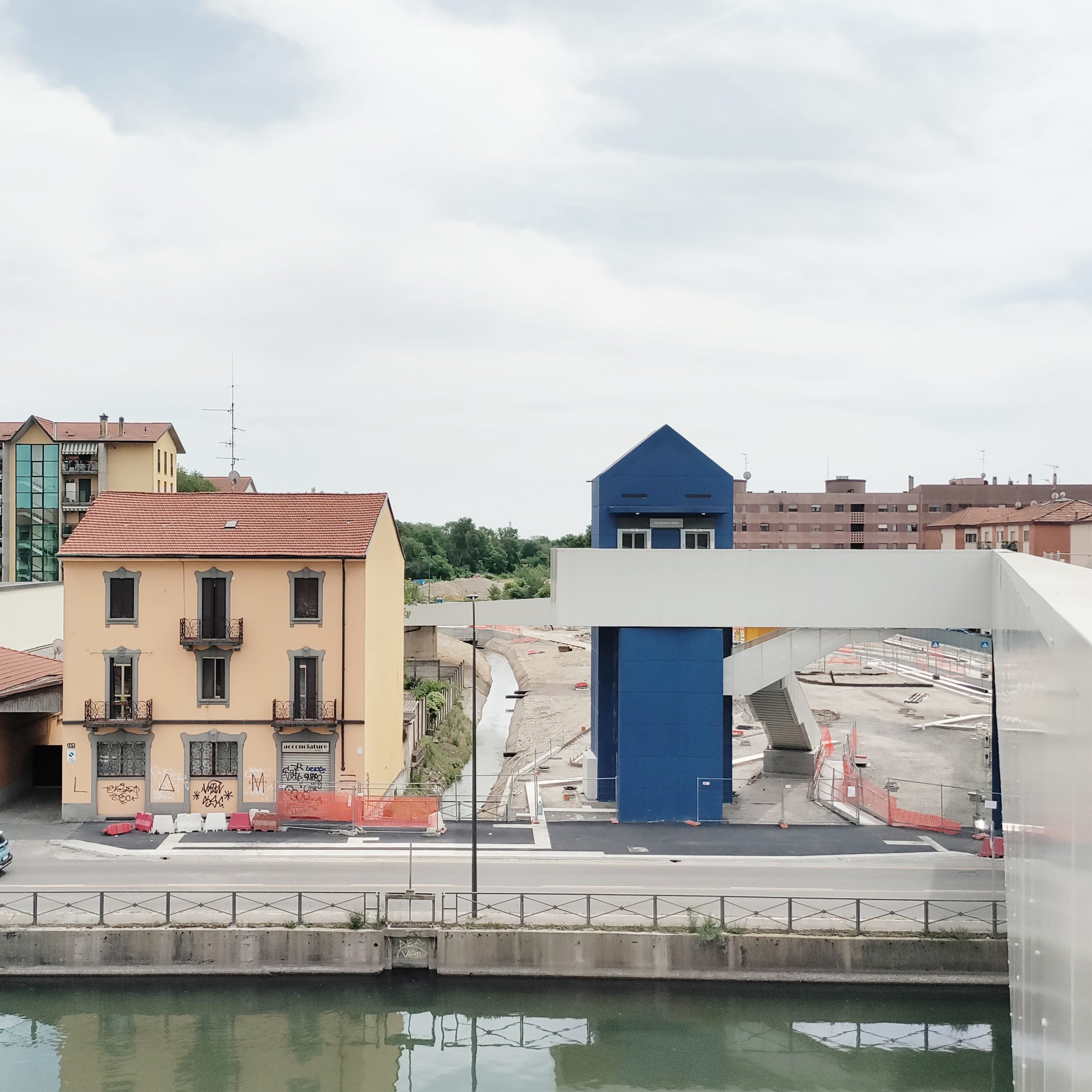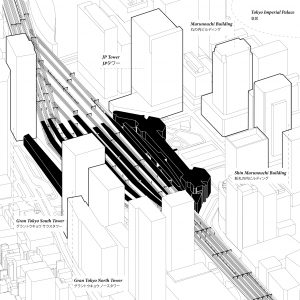Starting from a reflection that combines theory and practice, this paper focuses on the analysis of the San Cristoforo Bridge in Milan, designed in 2019 by AOUMM. The case shows how infrastructure can incorporate architectural and identity values through multiple dimensions.
The theme of urban connection was approached through the investigation of the Naviglio Grande bridge typology. A survey of all existing crossings revealed the absence of a recurring type; a variety of structures emerged, each shaped by distinct formal, functional, and material logics. What renders some examples significant is their capacity to act as territorial landmarks, shaping infrastructures that transcended functionality criteria to integrate a layered local, urban, and historical context.
The project develops along both formal elements (e.g., its columns inspired by Milanese architectural masters and its sections evoking the canal’s barges) and experiential aspects. The functional flow follows a straight north-south axis, yet it is enriched by transversal interruptions associated with vertical towers. These breaks are conceived as vague objects, devoid of specific function, working instead on spatial perception: balconies overlooking an elevated, new panorama.
Another core concept lies in the idea that “architectural narrative should never be addressed “in a linear way” (Tschumi, De Michelis, 2023: 23). Referencing Tschumi’s emphasis on narrative non-linearity (influenced by Barthes’ studies), the project embraces the notion of an aleatory narrative. As the elements of literature do not convey a singular story, the experience of passing over/under/through the bridge is not pre-determined. Its spatial complexity is defined by use, movement, and dynamics.
Thus, the act of crossing the bridge – restoring access to a previously neglected area – becomes an action of multifaceted value: mobility as a “basic need” (Vöckler & Eckart, 2023:11), as urban ritual, and as an aesthetic act (Careri, 2006).
Bibliography
- Careri, F. (2006). Walkscapes: Camminare come pratica estetica. Einaudi.
- Tschumi, B., & de Michelis, M. (2003). Intertextuality: Interview with Marco de Michelis. In G. Damiani (Ed.), Bernard Tschumi (pp. 19–26). Universe Publications-Rizzoli.
- Vöckler, K., & Eckart, P. (2022). Mobility design: Shaping future mobility. Volume 2: Research. JOVIS



